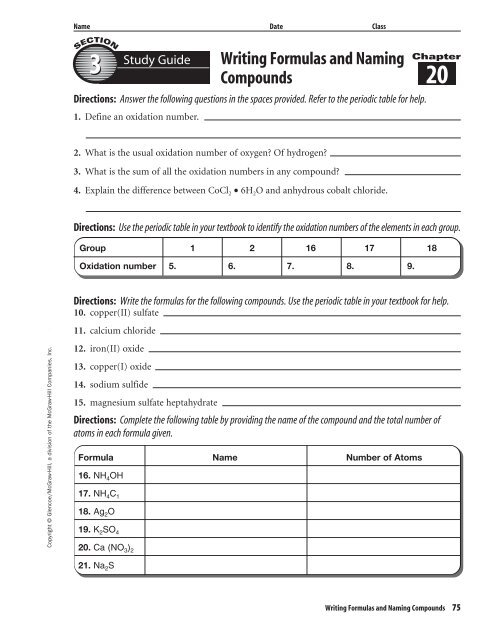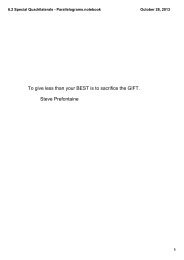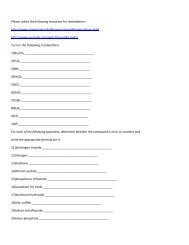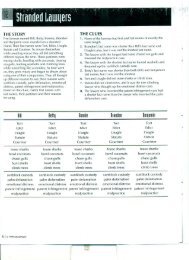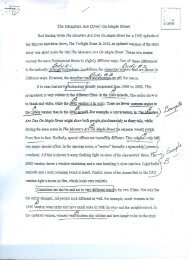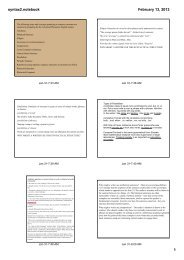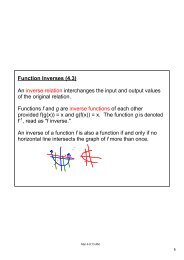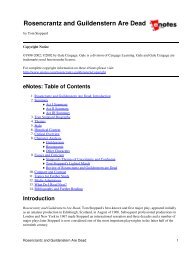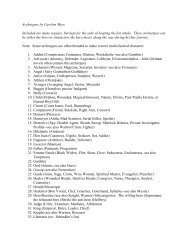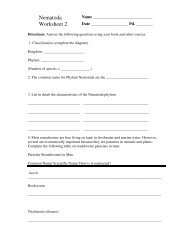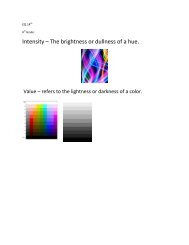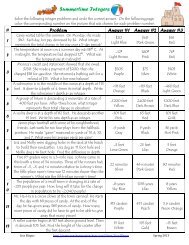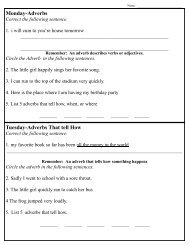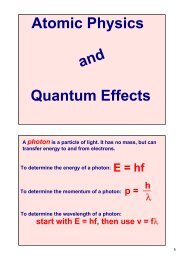You also want an ePaper? Increase the reach of your titles
YUMPU automatically turns print PDFs into web optimized ePapers that Google loves.
Copyright © Glencoe/McGraw-Hill, a division of the McGraw-Hill Companies, Inc.<br />
Name Date Class<br />
3<br />
<strong>Study</strong> Guide<br />
Writing Formulas and Naming<br />
Compounds<br />
Directions: Answer the following questions in the spaces provided. Refer to the periodic table for help.<br />
1. Define an oxidation number.<br />
2. What is the usual oxidation number of oxygen? Of hydrogen?<br />
3. What is the sum of all the oxidation numbers in any compound?<br />
4. Explain the difference between CoCl 2 • 6H 2O and anhydrous cobalt chloride.<br />
Chapter<br />
20<br />
Directions: Use the periodic table in your textbook to identify the oxidation numbers of the elements in each group.<br />
Group 1 2 16 17 18<br />
Oxidation number 5. 6. 7. 8. 9.<br />
Directions: Write the formulas for the following compounds. Use the periodic table in your textbook for help.<br />
10. copper(II) sulfate<br />
11. calcium chloride<br />
12. iron(II) oxide<br />
13. copper(I) oxide<br />
14. sodium sulfide<br />
15. magnesium sulfate heptahydrate<br />
Directions: Complete the following table by providing the name of the compound and the total number of<br />
atoms in each formula given.<br />
Formula Name Number of Atoms<br />
16. NH 4OH<br />
17. NH 4C 1<br />
18. Ag 2O<br />
19. K 2SO 4<br />
20. Ca (NO 3) 2<br />
21. Na 2S<br />
Writing Formulas and Naming Compounds 75


